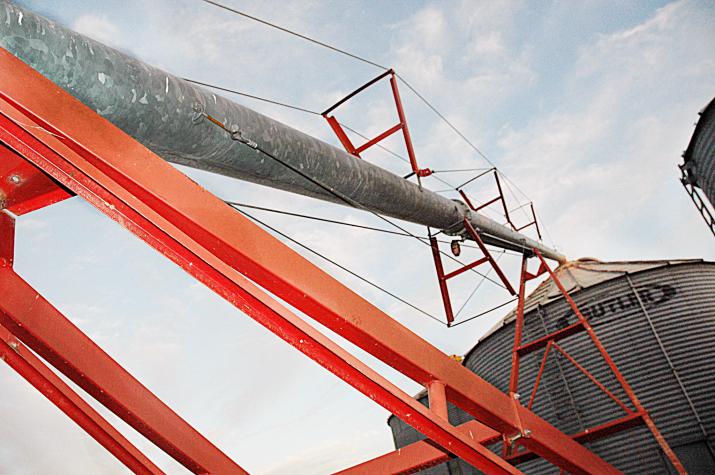Writer
Linda GeistCOLUMBIA, Mo. – As corn yields exceed commercial storage space, farmers will likely store some of this year’s crop in on-farm bins and in unconventional ways.
Stored grain attracts insects, and producers should take measures to protect their investment from insect damage, says Wayne Bailey, University of Missouri Extension entomologist.
First, remove grain residues from bins, nearby bunks or feed storage areas, Bailey says. Sanitize empty bins, combines, trucks and augers, paying special attention to fans, with pre-harvest insecticide applications. For best results, apply to empty bin surfaces and surrounding areas six to eight weeks before harvest.
Use a coarse spray of at least 30 psi to spray areas until wet. Insecticides are most effective when temperatures are 60 degrees or higher.
Second, apply a labeled protectant surface spray on grain to be stored. Streams of grain are usually treated as they flow into storage structures.
This is essential for grain that will be in storage through the summer months or longer, Bailey says. Long storage periods increase risk of infestation.
Make a second application of insecticide on the top layer of grain. Fill bins only to the height of sidewalls and level grain before top-dressing. This helps prevent invading insects, especially Indian meal moth, from entering grain beneath the top surface. Bailey also suggests hanging pest strips in the bin above the grain to control moths.
Third, monitor stored grain for pests. Bailey recommends monthly visual checks from the roof access door from November through April, and checking at least twice a month from May through October. The surface and the central core of the grain are most often infested, but sample other areas also.
A sour smell indicates a problem. You may also see clumped grain or condensation on the inside of the bin, webbing on the grain surface or the presence of insect larvae, adult beetles or moths.
Do not walk on the top layer of treated grain. In addition to being a safety risk, this may crack open areas for insects to enter. Monitor grain on the inside of the bin by using plastic tube traps, probe traps or pheromone traps. Insert these to attract insects and determine the kind and number of insects present. If these traps are unavailable, look at grain that has been removed with a grain probe from the side door.
Soybean is at less risk of infestation than corn if moisture is maintained at 13 to 14 percent, Bailey said. This is because soybean has high oil content.
Infestation happens in as little as three to six weeks if you don’t sanitize bins and equipment prior to grain fill, he said.
In normal years, fall temperatures usually allow the stored grain mass to cool to 50 to 55 degrees. This causes insects infesting the grain to become inactive. Some grain management recommendations suggest reducing the temperature of the grain mass to 35 to 40 degrees to restrict the development of molds.
Grain should not be frozen when reducing grain-mass temperature in the fall. During periods of warm fall weather, the risk of late-season insect infestations of stored grain increases. In the spring, the grain mass should be warmed to at least 60 degrees to prevent condensation of moisture on bin walls and subsequent damage from insects and molds.
If you observe infestation, quit feeding the grain to livestock immediately.
All applications should be performed by a licensed pesticide applicator. However, Bailey recommends using a professional pest control specialist to fumigate bins and other grain storage structures because of the hazards associated with poisonous gases emitted during fumigation.
